Wood is a material from which a wide variety of objects can be made. Furniture, doors, windows, shredders, bowls, decorative objects, load-bearing structures for houses, fences, pergolas, gazebos, chipboard, MDF or OSB, simple or laminated beams are just some of them. The variety of wood species and properties allows us to find both the material with the right look for luxury furniture and the right strength for the structure of a 2-3 storey house. But how do we know what to choose? Which properties are important in construction? How does wood compare to other building materials? These and other questions are answered below.
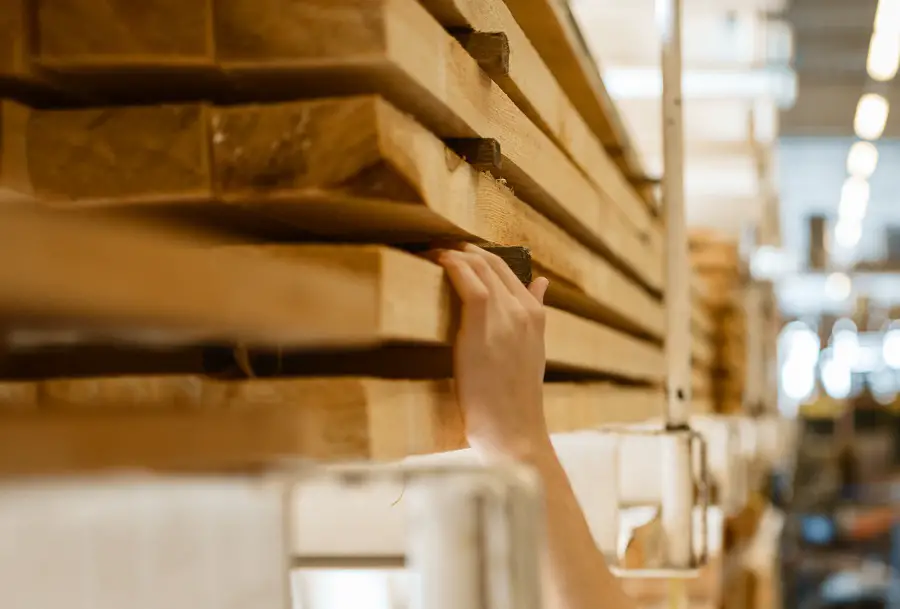
Wood, an anisotropic material
The main difference between wood and building materials such as brick or concrete is that wood is not a uniform material, but an anisotropic material. The properties differ within the same piece of wood according to certain criteria. Wood also differs according to species, in terms of natural grain, specific weight, strength or durability. Even when it comes from the same species, the properties of the wood differ depending on the growing conditions, the way it has been cut or the moisture content.
If we look at a trunk in section, in many species, we will see two well-defined areas: the sapwood area, towards the outside near the bark, lighter in colour, and the heartwood area, towards the centre, darker in colour. The two areas have different functions and the wood from these areas is also different. The heartwood is supportive and the wood is hard and strong. The sapwood has a feeding role for the tree and the wood is softer, less resistant and water-loving. When the tree is young, the sapwood area is wider and the heartwood narrower, and the proportion changes as the wood matures. Wood containing a lot of sapwood is not recommended for construction, and therefore neither is young wood.
The properties of the wood also differ depending on how it is cut. Wood cut radially deforms more slowly than wood cut tangentially to the annual ring. The properties of wood along the longitudinal axis are different from those along the radial axis.
Fibre is what makes the difference between species. Fibres are made up of cells, which are usually parallel to the longitudinal axis and have vessels inside them through which food circulates or has circulated. Sometimes, due to environmental conditions (drought, strong wind) the fibre may grow twisted, in which case the properties of the wood are different. Wood with twisted grain should be avoided because its behaviour differs from that of wood with normal grain.
Wood is a lighter material than water, and its specific weight can vary depending on the species between 300 and 900 kg/m³ (the specific weight of water is 997 kg/m³). There are few species heavier than water, and ebony is one of them. The denser it is, the tougher it is, because the cell walls are thicker, so the fibre is tougher. Spruce wood, which is used a lot in our construction because of its availability (20% from the forest floor), has a density of 450 kg/m³ and oak 675 kg/m³. Wood from sapwood has a lower specific weight than heartwood, hence the lack of strength.
Wood moisture
One of the factors influencing the properties of wood is the moisture content, which for wood used in construction should be between 12 and 18%. Wood has the capacity to absorb a lot of water, more than 2-2.5 times (250%) its dry weight (mass). As soon as it is felled it starts to lose water until it reaches 25-30%. The process takes 3-6 months. The water lost in this way is the water in the vessels through which food is normally transported.
The lower the humidity, the greater the strength of the wood. The remaining water is the water inside the fibre, in the walls of the vessels. To remove it, natural drying takes up to 3-4 years (even longer in dense species) or artificial drying is needed.
When water comes out of the pots, the wood does not change its dimensions. When it comes out of the walls of the vessels, shrinkage occurs. Wood is a hygroscopic material that likes water. When water gets into dry wood it is first absorbed into the walls of the pots and the opposite process of shrinkage, swelling, takes place. Shrinkage and swelling are higher in dense wood because the cell wall is thicker. Shrinkage is also different within the same type of wood, being the smallest in the longitudinal direction, i.e. along the grain (0.1-0.5%) and the largest tangentially to the annual ring (7-15%). This means that, for example, during drying, a wooden pole thins out much more than it shortens. Shrinkage is smaller in radially cut timber than in tangentially cut timber.
Drying can also cause warping of wooden elements. The mode of deformation also depends on the cut. Tangential cutting has the greatest deformation. Deformation is greater the closer the cut is made to the outside of the trunk. The type of cutting can be seen at the end of the plank. If the annual rings are seen as straight lines, the cut is radial and the changes are small. When cutting tangentially the annual rings are seen as arcs and are closer together the closer the cut is to the outside of the trunk.
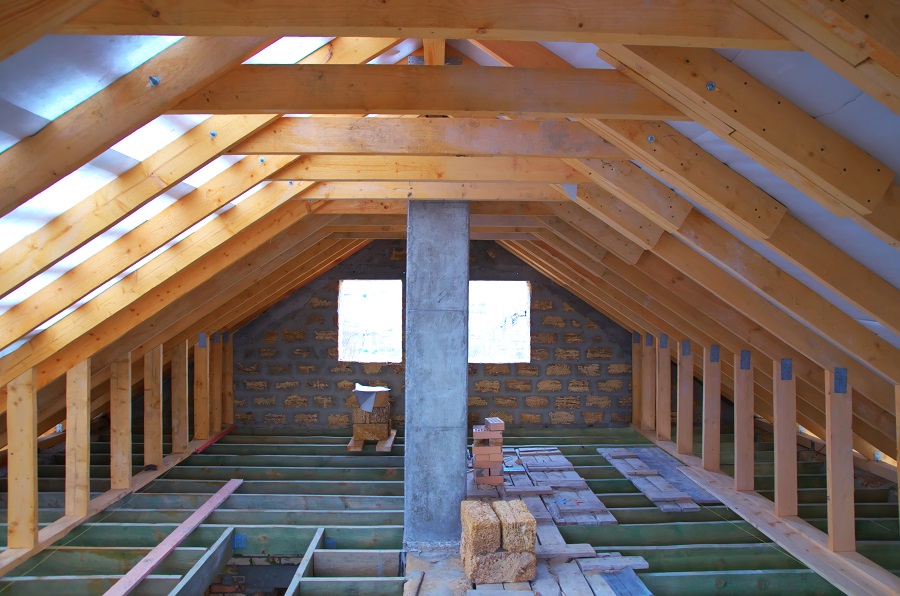
Mechanical properties important for the dimensioning of resistance elements
Wood is used in the construction of load-bearing structures, bridges, floors and prefabricated walls of timber-framed houses. There are pillars, beams, posts, uprights, bases or soles, and all these elements must be dimensioned to withstand the forces acting on the structure. In a timber frame building, the structural engineer does the design and the calculations are part of the draft structure.
The main forces acting on a house are compressive, bending, shear and tensile forces. Compression is the most important of these, as it is the force with which everything in the house - walls, roof, ceilings, finishes, furniture, people, snow on the roof, etc. - acts on the structural members of the structure. The studs and load-bearing walls must discharge all this load down to the foundation and ground level without sagging or buckling. For this to happen, the compressive strength of the element in question must be greater than the compressive force exerted. The compressive strength of wood differs according to the axis, the highest being in the longitudinal direction (500-700 kg/cm²).
Another force to which resistance elements are subjected is the bending force. It is exerted when lateral forces caused by wind or earthquake act on beams or columns that are not in braced structures and are rigidly fixed to the floor. These actions result in deformation of the element relative to its longitudinal axis. Wood is an elastic material which is able to return to its original shape when the force acting on it is less than its bending strength. The bending strength of wood is very good and varies depending on the species from 300 to 900 kg/cm².
Durability of wood
Durability is the ability of wood to stand the test of time without deterioration. It is water that reduces the durability of wood because it is water that maintains the micro-organisms that lead to wood rot. Wood is more durable the drier it is. Durability is very important for wood used outdoors, but also for wood in load-bearing structures. Avoid wood with a high absorption capacity, wood affected by various diseases (bluing of wood) or that with low resistance to rotting and environmental factors. More information on sustainable wood species can be found at here.
Industrialized wood
Industrialised wood is now widely used in construction. Glulam, laminated timber, CLT, LVL are some of the options. Some of these materials we are already used to, others are becoming more familiar and used. The purpose of industrialised wood was to make use of the qualities of the wood by removing its weak parts. Laminated wood and glulam are much more dimensionally stable, and processing has made it possible to remove defects that would have weakened strength (knots, cracks, defects). Laminated beams are very elastic and resistant, allowing impressive constructions with very large openings. CLT is a material with very good strength and stability, without defects and very light compared to concrete or brick.
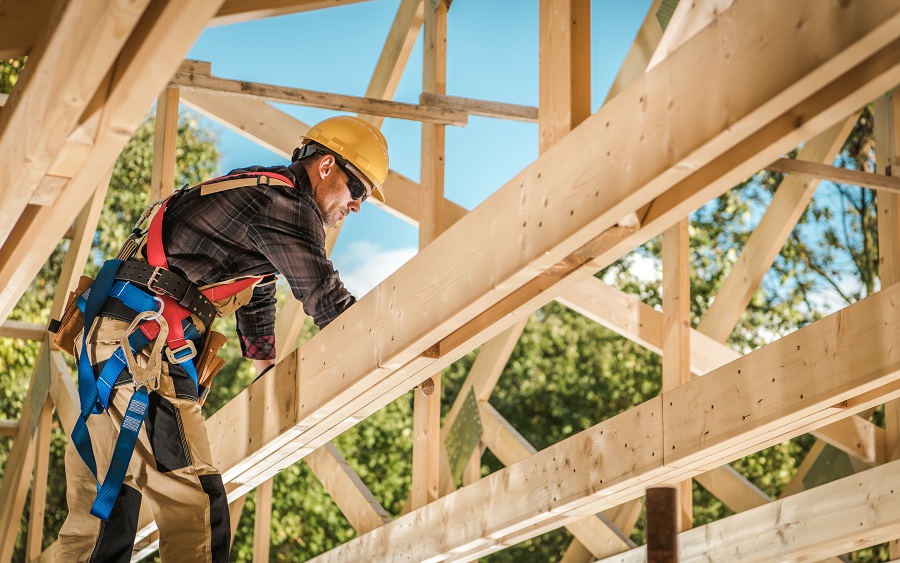
Even if there are adhesives, preservatives or other additives in the materials, the raw material is solid wood in a very high percentage. Their use makes life easier for builders and allows beneficiaries to enjoy the beauty and warmth of wood over a longer period of time.
I hope you find this material useful. It is a vast subject and there will certainly be additions. You can also contribute to its improvement. And if you have any questions, please leave them in the space below. I'll be sure to get back to you.

















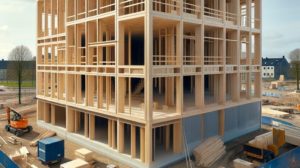

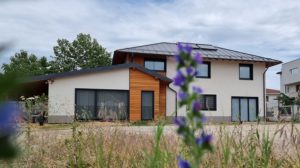
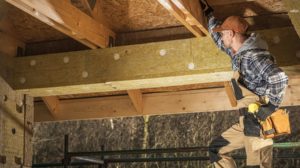



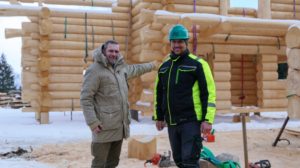

Hello. I would like to know what protects the wood against damp after the house has been built and against fungus and decay. Thank you
Hello!
If the wood you want to protect is the one used for the structure, it should be treated with anti-fungal and anti-cavity protection solutions. Bochemit prevention solutions are one effective option, but there are others. If the wood is covered with plasterboard, there is no need to treat it against moisture.
For interior wood that remains visible, such as beams, oil or varnish can be used to protect against moisture. Oil is easier to apply and is effective. You can use linseed oil, tung oil, Danish oil or Kreidezeit oils.
Exterior wood is protected against moisture and sunlight with solvent-based or water-based lacquers or exterior varnishes.
For further information I leave below some links.
All the best!
https://revistadinlemn.ro/2020/08/27/tratament-preventiv-impotriva-ciupercilor-mucegaiului-si-a-insectelor-care-ataca-lemnul/
https://revistadinlemn.ro/2018/05/15/ulei-de-in-cand-unde-si-cum-se-foloseste-cum-sa-ti-faci-singur-vopsele-de-ulei/
https://revistadinlemn.ro/2019/04/17/7-reguli-de-respectat-la-finisarea-cu-ulei-a-lemnului/
https://revistadinlemn.ro/2020/07/02/lazuri-kreidezeit-pe-baza-de-ulei-pentru-finisaj-exterior-natural-si-rezistent/
https://revistadinlemn.ro/2018/06/25/8-cele-mai-frecvente-intrebari-despre-protejarea-lemnului-la-exterior/